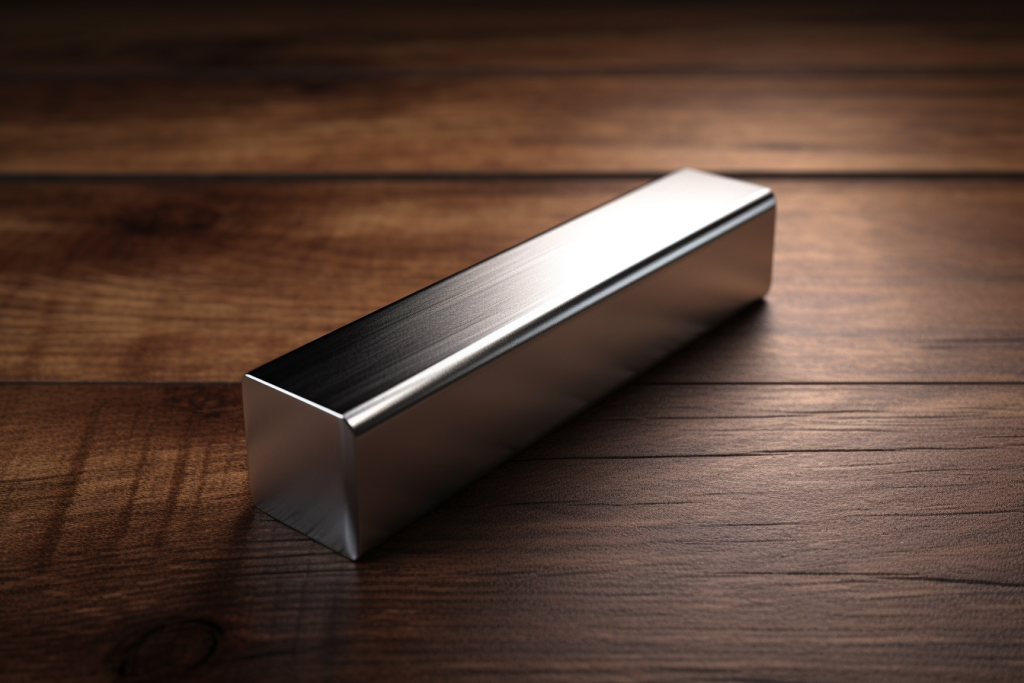
1045 steel is a versatile and widely used material known for its exceptional properties in various industries.
In this post, we will cover the key aspects of 1045, including:
- Properties
- Hardness
- Composition
- Tensile strength
- Density
By understanding the characteristics of 1045, we can appreciate its diverse applications and the benefits it brings to numerous manufacturing processes.
1045 Steel Properties: A Blend of Strength and Toughness
1045 possesses a remarkable combination of strength and toughness, making it highly suitable for applications that require durability and resistance to wear.
With a moderate carbon content, it strikes a balance between hardness and machinability, allowing for easy shaping and forming processes. This includes forging.
Carbon content: 0.45%
Iron content: 98.7%
Manganese content: 0.80%
Phosphorous content: 0.04%
Sulfur content: 0.05%
These properties make 1045 a popular choice for components in machinery, shafts, gears, and general-purpose structural applications.
1045 Steel Hardness: Achieving a Suitable Balance
1045 exhibits a hardness level of approximately 55-58 HRC (Rockwell Hardness Scale), providing a good compromise between hardness and ease of machining.
This hardness range allows 1045 to resist deformation under high-stress conditions while still being machinable with standard tools.
The balanced hardness of 1045 contributes to its versatility in a wide range of manufacturing applications.
1045 Steel Composition: Carbon and Alloying Elements
1045 primarily consists of carbon (0.45%) and other alloying elements, including manganese, phosphorus, and sulfur.
The carbon content contributes to the material’s strength and hardness, while manganese enhances toughness and hardenability.
Phosphorus and sulfur, in controlled amounts, help improve machinability.
The carefully balanced composition of 1045 steel ensures its suitability for various industrial applications.
1045 Steel Tensile Strength: Robustness Under Pressure
1045 possesses a commendable tensile strength, typically ranging from 565 MPa to 700 MPa (MegaPascals).
This high tensile strength enables 1045 to withstand substantial forces and loads without compromising its structural integrity.
Its robustness makes it a reliable choice for components subjected to heavy-duty applications, such as axles, crankshafts, and machinery parts.
1045 Steel Density: Balancing Weight and Strength
1045 steel exhibits a density of approximately 7.85 g/cm³ (grams per cubic centimeter).
This can also be read as approximately 0.284 lb/in³ (pounds per square inch).
This moderate density allows for a good balance between weight and strength, making 1045 steel suitable for applications where a lightweight yet robust material is desired.
Its favorable density-to-strength ratio contributes to its use in industries such as automotive, aerospace, and construction.
Conclusion
1045, with its impressive properties, balanced hardness, specific composition, robust tensile strength, and favorable density, stands as a versatile material in numerous industrial applications. Understanding the unique characteristics of 1045 empowers engineers and manufacturers to harness its potential for achieving durable and reliable solutions across various sectors.
Where to Buy 1045
You can get a variety of lengths and thicknesses at OnlineMetals.com.
Here’s how to make your selection:
- Select Material: Carbon Steel
- Select Shape: Bar-Rectangle
- Select Alloy: 1045
- Thickness: 6 mm (gets you close to 1/4 inch)
- Width: 25 mm (gets you close to 1 inch)